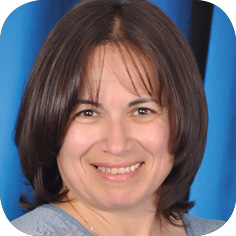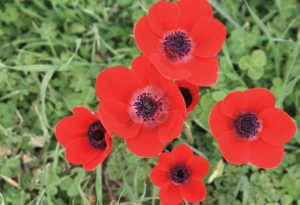The city of Ramallah is positioned ten miles away from Al-Aqsa Mosque and the Church of the Holy Sepulcher. The fact that Ramallah is in the center of the West Bank qualifies the city to be the departure point for roaming between other Palestinian cities.
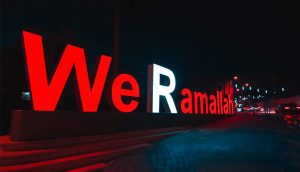
Ramallah is and will remain one of my favorite cities. When I was a kid, we used to get on a big red bus to travel from Jerusalem to Ramallah (things always seemed bigger than they actually were when I was a kid). Sometimes, we used a taxi – at that time there was only one type, the seven-passenger Mercedes limousine that came in different colors. The adventure was not simply reaching our destination but experiencing the trip itself. I knew that we were close to our destination when my mom would proudly say: “Look to your left and you will see Qalandia Airport; look carefully and you might see a plane,” which in fact we never saw while traveling on the big red bus. Another sign that we were close was when someone on the bus said: “We have reached Al-Khammarah,” which meant that we were very close to Ramallah City. Hopping on and off the bus was very easy and fun. But one day, a man in a wheelchair tried to get on the bus, and it was not easy at all. Although he received a lot of help from many people, it took them a while to get the man seated. After that incident, I started to notice that old people with disabilities had difficulty using the bus. It was also difficult for blind people and women carrying babies to use our beloved big red bus. At that time, Ramallah was relatively small and could easily accommodate all its residents, citizens, and visitors with their common and special needs.
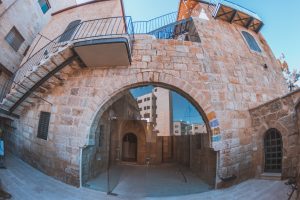
During the past two decades, the Ramallah area has witnessed a considerable transformation, marked particularly by its rapid urbanization. With the establishment of the Palestinian Authority (PA) in 1994, various realities emerged that led to internal migration to new urban areas.
In terms of its economy, Ramallah reflects the image of a prosperous city with feverish business activity and a real estate flurry that has filled its hills with buildings, making it such an exception in the economic landscape that some consider it the economic capital of the Palestinian state.
Ramallah hosts the headquarters of the Palestinian telecommunications companies (Jawwal and Al-Wataniya mobile companies). The Palestinian Telecommunication Group was established in 1995 in Ramallah and was the first telecommunications company owned by the private sector in the Arab world. It began its operations in January 1997 as an operator and provider for all types of telecommunications services in Palestine.
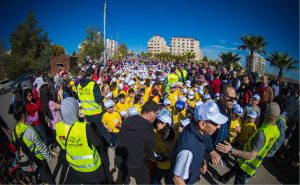
Today, Ramallah is characterized by a culture of intellectual and religious pluralism: the city of arts and theater, the city of interaction and dialogue, the city of domestic tourism, parks, gardens, cafés, fine restaurants, and vibrant nightlife. The city of youth, clubs, and sports. Ramallah is rich in cultural activities, seasonal and annual festivals, celebrations, and artistic activity. The city has an open, beautiful life and lovely weather where the breeze of the Mediterranean Sea reaches you wherever you sit.
It boasts a number of sports centers and active youth clubs, some of which were established at the beginning of the twentieth century. Others are new, such as the Ramallah recreational complex, which is owned by Ramallah Municipality and designed to be accessible and useable by people with disability.
Ramallah also has several charities, mostly women’s, and includes some that were founded in the 1940s. These charities, which have multiplied several times over the last two decades, aim to provide support for many societal segments, including women, children, the elderly, persons with disabilities, orphans, and others.
Ramallah is considered a political and diplomatic center – a veritable hub for political parties and groups, youth activism, and intellectual activity. It is the preferred location of most human rights’ and children’s organizations, institutions, and companies. Ramallah is characterized by a plurality of faith communities, churches, and mosques; it is indeed the city of tolerance, inclusion, and innovation.
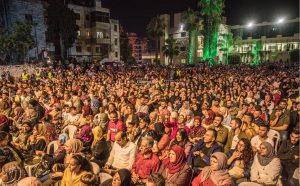
A study found that the arrival of the PA accelerated the process of urbanization in the Ramallah area, mainly due to urban-urban and rural-urban internal migration. In fact, this process has been shown to be more prevalent in Ramallah area than in other Palestinian cities.*1
As the world becomes increasingly urban,*2 there is a demand to better understand how the benefits of urbanization can be shared more equitably among city residents, particularly in developing inclusive cities where everyone, including the most marginalized, have access to basic services and the opportunity to build a prosperous future. It goes without saying that once local governments (municipalities) are unable to provide services for all people living in the city, intensive urban growth can lead to poverty and inequality; large volumes of uncollected waste, which leads to health hazards; elevated levels of CO2 emissions from cars; loss of trees, which causes more pollution; and pollution from toxic substances and vehicles that can endanger animals and threaten their habitats and food sources.*3
According to the World Bank, to ensure that tomorrow’s cities provide better living conditions and equal opportunities for all, it is essential to understand that the concept of inclusive cities encompasses a complex web of multiple spatial, social, and economic factors.*4
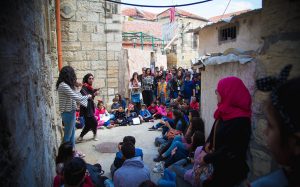
Spatial inclusion requires providing affordable necessities such as housing, water, and sanitation. Lack of access to essential infrastructure and services is a daily struggle for many disadvantaged households. Ramallah Municipality aims to improve not only the essential infrastructure and services it provides, but also the way of doing business through employing new and creative approaches such as the Ramallah Smart City project, clean energy, and other initiatives.
Social inclusion is a way to guarantee equal rights and the participation of all, including the most marginalized. Recently, the lack of opportunities for the urban poor and greater demand for representation by the socially excluded have exacerbated incidents of social upheaval in cities. More development should be initiated as part of a common vision of social inclusion. Ramallah Municipality has strongly increased and strengthened its members’ participation through the assistance of community-led advisory committees for all its sectors (infrastructure, IT, health and sanitation, cultural activities, and economic development) that contribute significantly to the decision-making process. Traditionally, Ramallah Municipality has created many social and cultural activities for children, youth, and families, such as the Children and Family Marching Marathons, Nawar Nisan for children, and Wein a-Ramallah Festival. These activities are more than an annual celebration ritual and deeper than just a spring and summer tradition. For example, this year’s main theme of Wein a-Ramallah was “Diversification and Difference,” designed to promote the spirit of the city – the belief in plurality and dialogue among various ideological, cultural, political, and social groups. It also reflects the diversified areas of the city and the variety of arts performances presented in the festival. Ramallah displays well-preserved social, cultural, and historical heritage that has become a focal point of attention in recent years. Ramallah Municipality recently established a community center called the Forum of Expertise, which aims to focus on the social and cultural needs of the elderly in the city as part of Ramallah Municipality’s vision of inclusivity.
Economic inclusion aims to create jobs and give urban residents the opportunity to enjoy the benefits of economic growth as a critical component of overall urban inclusion.
What distinguishes the city of Ramallah is its harmony, variety, and diversity in a context of unity. For this reason, during the past ten years, Ramallah has become a place that attracts people from various regions, environments, and religions, especially those who seek the security and safety that the city offers. This has created a culturally diverse city, in which residents are offered the best of urban living. Ramallah is widely considered to be the most open and liberal city in Palestine, prompting some to call it “the soul of Palestinian culture” – in other words, a truly inclusive city.
*1 “Urban Transformations in the West Bank of Palestine, Drivers and Consequences: a case of Ramallah Area,” by Mohammad Muhsen, article available at https://tel.archives-ouvertes.fr/tel-01586147.
*2 “Advantages and Disadvantages of Rural – Urban Migration,” by Ocean Malandra, updated June 27, 2018, article available at
http://www.ehow.com/info_8220843_problems-created-due-urbanization.html.
*3 “5 Major Problems of Urbanization,” by Jasmine Reese, updated June 27, 2018, article available at
http://www.ehow.com/info_10056161_5-major-problems-urbanization.html.
*4 “Inclusive Cities,” World Bank Group, article available at
https://www.worldbank.org/en/topic/inclusive-cities.

